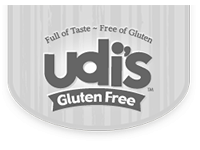Gluten Free
What does following a gluten-free diet mean? That you're embarking on an easy diet with a wide range of health-promoting effects. Instead of dwelling on what you’re giving up, consider that you’re going to enjoy a whole new world of delicious food options to meet your special dietary needs. You’ll be eating seasonally, choosing more fresh fruits and vegetables, focusing on meats, seafood, poultry, legumes, lentils, corn, and rice, and discovering fascinating ancient grains such as quinoa, amaranth, and millet. You’ll be able to eat potatoes, eggs, most cheeses, even chocolate (!)—and enjoy them without guilt because you’ll be taking good care of your body. In fact, you’ll probably end up eating—and feeling—better than ever!
Visit this page for more information about living Gluten Free
---
We carry a large variety of gluten free items, the brands listed below represent just some of the offerings we carry















More Diets
Stroke

About This Condition
Stroke is a condition caused by a lack of blood supply to the brain or by hemorrhage (bleeding) within the brain.
Stroke is the third leading cause of death in the United States, but most strokes are not fatal. Depending on the area of the brain that is damaged, a stroke can cause coma, reversible or irreversible paralysis, speech problems, visual disturbances, and dementia. Factors that increase the risk of certain types of stroke include hypertension, diabetes, elevated levels of high cholesterol or homocysteine, and atherosclerosis (hardening of the arteries) of the blood vessels that supply the brain.
Symptoms
Symptoms of stroke include weakness, numbness, or inability to move an arm or leg; sudden and intense headache; severe dizziness or loss of coordination and balance; difficulty with speaking or understanding; and blurred or decreased vision in one or both eyes. People with stroke may also have seizures, vomiting, drooling, and difficulty swallowing. Some people experience temporary warning episodes of neurologic symptoms called transient ischemic attacks (TIAs) before suffering a complete stroke. People experiencing symptoms suggestive of having suffered a stroke or a TIA require immediate (emergency room) medical attention.
Healthy Lifestyle Tips
Smoking is associated with a significantly increased risk of stroke.1, 2, 3 Even secondhand smoke puts nonsmokers at increased risk.4
Exercise reduces the risk of stroke according to most,5, 6, 7, 8 though not all,9 studies. The benefits of exercise are probably due to its effects on body weight, blood pressure, and glucose tolerance.
Obesity has been associated with an increased risk of stroke in most studies.10, 11 Excess abdominal fat appears to be more directly linked to increased risk of stroke, compared with fat accumulation in the thighs and buttocks.12, 13, 14 While losing weight and keeping it off is difficult for most people, normalizing weight with a healthful diet and exercise program is one of the best ways to reduce the risk of many diseases, including stroke.
Copyright © 2024 TraceGains, Inc. All rights reserved.
Learn more about TraceGains, the company.
The information presented by TraceGains is for informational purposes only. It is based on scientific studies (human, animal, or in vitro), clinical experience, or traditional usage as cited in each article. The results reported may not necessarily occur in all individuals. Self-treatment is not recommended for life-threatening conditions that require medical treatment under a doctor's care. For many of the conditions discussed, treatment with prescription or over the counter medication is also available. Consult your doctor, practitioner, and/or pharmacist for any health problem and before using any supplements or before making any changes in prescribed medications. Information expires December 2024.











